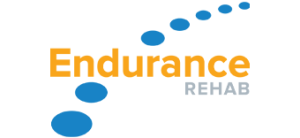PATELLOFEMORAL PAIN INCYCLING
Written by Nathan Koch
Endurance Rehabilitation
Patellofemoral pain (pain around the kneecap) is among the most common injuries that affect cycling performance. This is secondary to thousands of pedal revolutions in a fixed position. As a result, we speak in millimeters when evaluating the cyclist and bike position. Any slight deviation in the chain of movement and put undo stress on a joint. Ultimately causing the cyclist to lose efficiency and possibly create an overuse injury such as patellofemoral pain.
Patellofemoral pain is a global diagnosis that may include one or more of the following: patellofemoral syndrome, anterior knee pain, patellar tendinitis, patellar tendinosis, plica irritation, fat pad impingement, ITB friction syndrome, chondromalacia and subluxation. The specific diagnosis will describe the location of pain and the possible mechanism of pain. Typically, the cyclist will complain of vague knee pain or aches with minimal to no swelling and possibly popping or catching sensation around the kneecap. They will experience increased pain with squatting, ascending/descending steps (descending is typically worse) and getting up from prolonged sitting. On the bike, they will report generalized knee pain/stiffness that can be worse in cooler climates, worse with seated climbing, pushing big gears and often occurs after riding (particularly trying to get up from sitting on the days that they ride). Ultimately, it is important to determine what factors have caused dysfunction and subsequent pain.
A general understanding of patellofemoral anatomy and function is necessary in determining what factors can put you at risk for injury. The extensor mechanism of the knee (front of the thigh) consists of the quadriceps femoris, quadriceps tendon, patella, and patellar tendon. The hamstrings (the back of the thigh) provide dynamic control of flexion and extension of the knee as an opposite to the quadriceps. The VMO or vastus medialis obliques (inner portion) of the quadriceps is recognized as the primary medial stabilizer of the extensor mechanism and patellar alignment and is assisted by the hip adductors (groin muscles). The lateral (outer) dynamic forces acting on the patella are the iliotibial band (ITB), the lateral retinaculum, and the vastus lateralis (outer portion of the quad). The patella is the centerpiece of all the stabilizing forces. As these stabilizing forces act through the patella, a patellofemoral joint reactive force (PFJRF) is created by compression of the patella against the femur (thigh bone). The greater the tension generated by the quadriceps, the greater the resultant PFJRF. The PFJRF increased significantly with increased knee flexion (bending) such that at 15 degrees of flexion it is 1 x body weight; at 30 degrees, 2 x body weight; at 45 degrees, 3 x body weight; and at 75 degrees, 6 x body weight. From 20 degrees of flexion to full extension, little patellofemoral contact occurs. After 90 degrees of flexion, the center of the patella again does not articulate significantly with the trochlear groove. It is primarily in the mid ranges, from 30 to 90 degrees of flexion, where the patellofemoral contact areas are the greatest. During the pedal cycle, the knee goes through approximately 80 degrees of motion. The knee begins the power phase flexed about 110 degrees and extends to about 30 degrees of flexion. This is of great significance in cycling since most revolutions are performed when there is the greatest pressure on the patellofemoral joint. This can help explain why most cyclists have increased pain with seated climbing versus climbing out of the saddle. As a result we must keep this in mind when assessing bike fit and when designing a strength and flexibility program.
In order to further understand how the patellofemoral joint works on the bike you must understand how the hip and the foot and ankle influence function. Common hip/foot/ankle findings that can cause patellofemoral pain are: leg length discrepancy, wide pelvis, excessive or limited hip mobility, muscle weakness (particularly gluteals), excessive or limited ankle motion, foot pronation and/or flat feet and inflexibility. For example, while watching a cyclist ride you notice that he or she brushes the inside of their thigh or knee against the top tube. This abnormal hip and knee motion may be due to structural deformities, tight tensor fascia lata, imbalance in the strength and/or flexibility of the hip rotators, foot and ankle pronation or weakness of the gluteal and piriformis muscles. Clinically, measuring the quadriceps angle (Q angle) has been used by therapists and doctors to determine abnormal forces through the patella with respect to the hip. But there has been no consensus with respect to how this measurement should be taken. More importantly, this measurement is typically taken statically; therefore, the contribution of abnormal segmental motions and muscle activation to the Q angle during dynamic activities may not be appreciated. Therefore, in a cyclist, we must evaluate the patellofemoral joint along with the pelvis, hip, ankle and foot as they function together on the bike.
The patellofemoral joint functions on the bike based on the individual’s anatomical considerations described above, bicycle fit and pedaling/training techniques. Bike fit specifications that may cause patellofemoral pain are: low saddle, saddle to far forward, fore/aft cleat alignment, crank arm length, excessively rotated cleats and potentially even frame size and geometry. Look for signs of abnormal wear on the seat and cleats and re-evaluate any new additions to the bike that you have made recently. Remember that when making a change to the bike fit to reduce knee pain, you may cause a ripple effect and subsequent inefficiency or pain elsewhere. Always consult a trained professional if you are unsure. Training errors that may also contribute to pain are: low cadence/ pushing high gears, excessive duration, high intensity, excessive climbing, heavy weight training, plyometrics and an aggressive race schedule. There is significant research available demonstrating that heavy training loads and high mileage contribute substantially to knee injuries. Likewise, a rapid increase in training distance or intensity, seen in the early cycling season, also leads to overuse injuries.
In addition to changing your training program and bike fit there, are several other pain relieving techniques that can be instituted prior to seeking a medical specialist. Try the standard RICE protocol: rest or reduction in cycling (low resistance and high cadence), ice, compression and elevation. Avoid sitting with knee excessively bent, cross-leg sitting and prolonged squatting. In addition, perform a daily stretching routine that includes the entire lower extremity and use a foam roller or massage your legs. NSAIDS and analgesics (Biofreeze, Traumeel lotion and Arnica gel) can also be beneficial for reducing pain and inflammation. Core and lower extremity strengthening exercises are extremely important although if not designed and performed appropriately then further irritation may occur. If medical attention becomes necessary, the decision to treat the lower extremity needs to be based on a systematic biomechanical evaluation, in particular, a thorough analysis of bicycle fit and functional movements. This intensive evaluation should be performed by a sports medicine physical therapist or physician that traditionally works with cyclists. Cycling specific physical therapy for patellofemoral pain may include core/hip stability in all planes of movement, static and dynamic flexibility exercises, manual therapy techniques, lower extremity strengthening, neuromuscular re-education, patellar taping and cycling specific orthotics. Seek medical attention immediately if any one of the following occurs: moderate to severe swelling, persistent swelling, joint-locking, minimal to no change in pain with conservative treatment listed above, severe weakness, constant unrelenting pain or patella dislocating. If the pain starts during a critical period in your race season seek medical care immediately – fast results that allow us to endure is what we all strive for.
References
1. Asplund C, St.Pierre, P: Knee pain and bicycling. The Physician and Sportsmedicine 2004;32(4).
2. LaBotz M: Patellofemoral Syndrome. The Physician and Sportsmedicine 2004;32(7).
3. Powers C: The influence of altered lower-extremity kinematics on patellofemoral joint dysfunction: a theoretical perspective. J Orthop Sports Phys Ther. 2003;33(11).
4. Child D, Doucette S: The effect of open and closed chain exercise and knee joint position on patellar tracking in lateral patellar compression syndrome. J Orthop Sports Phys Ther. 1996; 23(2).
5. Press J, Kibler B, Herring S: Functional Rehabilitation of Sports and Musculoskeletal Injuries. Maryland, Aspen Publishers, 1998, pp 254-264.



